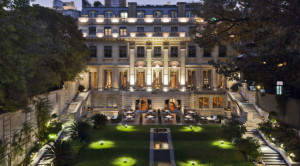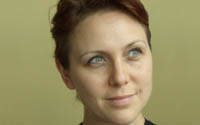PALACIO DUHAU: TAKE A STEP BACK TO THE BELLE EPOQUE
PALACIO DUHAU: TAKE A STEP BACK TO THE BELLE EPOQUE
By CHANTAL COOKE
It’s easy to complain that some of the world’s most beautiful and historic houses are being taken over by large corporates, and in the process we’re losing a part of the country’s culture and past. Sometimes that is certainly the case. But there are times when the opposite is true.
Take the Palacio Duhau-Park Hyatt, located in the fashionable Recoleta district of Buenos Aires. Part of the hotel was originally the Palacio Duhau, built in 1934 by French architect León Dourge. It was one of the few remaining palaces representing the city’s traditional and exclusive “Porteña” aristocracy – the Duhau family was its original occupant. However, by the start of the 21st century, it was no longer looking its best and the city was in danger of losing this iconic building and its interior.

However, after being acquired by the Rosario Group, the building has been carefully restored back to its full ‘belle époque’ glamour, and converted into a luxury hotel. It has preserved the past and brought it into the modern day with a business plan that will hopefully ensure the future of this beautiful building – whose story begins in the 1920’s. It was then that Mrs. Candelaria Duhau bought one of the main residences on Alvear Avenue, the most elegant road of the aristocratic neighbourhood of Recoleta.

Fourteen years later, in 1934, her son, Luis Duhau, decided to build an impressive home for his own family. Mr. Duhau, who had become Minister of Agriculture and one of the most powerful men in Argentina, was inspired by one of his many trips to Europe. In France, he fell madly in love with Le Chateau Des Marais, a country castle in the commune of Le Val Saint Germain.
Back in Buenos Aires, he bought the lot next to his childhood house, commissioned the French architect León Dourge, and started building a Louis XVI style palace, which he named after himself: Palacio Duhau (Duhau Palace).
These types of grand palaces were no longer being built in France so it was a challenge for the architect, who had to adapt the rural dimensions of the Marais Castle to a city scale. Oak panels where brought from Normandy, marble from Italy and chandeliers from all around Europe. Its neoclassical style and its simple lines gave the Palace an enduring elegance.
However, after more than 50 years in the family, the Duhau descendants decided to sell the emblematic building. In August 2002 the Palace was declared a National Historic Monument. That same year, the Rosario Group, started the restoration with the aim of recovering the traditional stories of the Palace and integrating it to the daily life of Recoleta – just as it used to be in its golden age.

A stay in the hotel allows you to start a love affair with the past. Imagine yourself, dressed in an evening gown, or coat tails, all elegance and aristocracy. Saunter through the hotel and gardens, admire the art collection and the chandeliers from Russia. Stop for a cheese and wine tasting in a cellar with over 7000 bottles. Delight in the flavours of the artisanal Argentinian cheeses, selected by the maître fromager, and served with dried fruits, nuts and homemade marmalades. And if this isn’t quite enough pampering for one evening then head to the spa for a romantic treatment for two.
This house was originally home only to the elite, but as a hotel it’s open to anyone who wants to experience the Buenos Aires of the last century.
I came away wishing I could have stayed in the past – just a little bit longer.
FACT BOX:
British Airways operates a daily flight to Buenos Aires. Fares start from £912 return including taxes, fees and charges. See: www.ba.com
To arrange your trip to Argentina contact Argentina Travel Partners

About the Author:
Chantal Cooke is an award winning journalist and broadcaster with a passion for the planet. In 2002 she co-founded the award winning radio station PASSION for the PLANET and in 2009 Chantal was awarded London Leader in Sustainability status. Chantal also runs a successful communications agency – Panpathic Communications.
